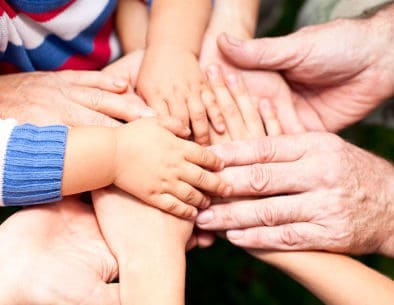When we talk about community strength in Rochester, we’re talking about neighbors helping neighbors—especially those who’ve served our country and returned home to serve our city in a whole new way. At Vehicles For Veterans, we’re proud to support the local Rochester veteran entrepreneurs who bring their work ethic, creativity, and care into everything they […]

World Humanitarian Day 2016
World Humanitarian Day honors those who risk their lives bringing aid and relief to people in crisis. The day was created to honor those who lost their lives when the United Nations headquarters in Iraq was targeted in a 2003 terrorist attack.
The military doesn't exist to provide humanitarian relief, but it often does assist aid workers by making it possible for them to reach those in need. Whereas humanitarian organizations provide impartial assistance regardless of the political or social circumstances, the military can't be neutral and its reach is often affected by politics. Still, with its air, land and sea resources, the military is well equipped to help and often does step in to provide direct assistance when disasters strike.
Humanitarian Efforts Of The U.S. Military
Floods, earthquakes, wildfires tsunamis, hurricanes and other natural disasters require immediate action. During times of domestic and international crisis, military branches often provide food, transport people to safer areas, perform search and rescue missions and provide medical assistance.
Here are 5 natural disasters the military has responded to in recent years:
- 2010 Haiti earthquake. More than 200,000 people were killed and 250,000 were injured. The U.S. Navy responded with 30 ships including USNS Comfort, the hospital ship. The Navy also sent more than 500 doctors, nurses and other medical personnel to provide care. More than 2,000 Marines also assisted the country in the aftermath of the disaster. The aircraft carrier USS Carl Vinson also arrived with 19 helicopters that delivered badly needed supplies to the people whose lives were uprooted.
- 2004 Indonesia tsunami. In 2004, 14 countries were struck by the tsunami in the Indian Ocean and more than 280,000 people lost their lives. Nearly 50 Marine and Navy helicopters and the USS Abraham Lincoln arrived and delivered food and medical supplies to some of the worst-hit areas. The USNS Mercy was stationed to provide medical care. Numerous airlifters that helped move displaced people were also dispatched.
- 2011 Japan earthquake and tsunami. In the aftermath of the disaster, Marines were among the first to arrive to provide assistance. They worked to clear rubble and vehicles from the Sendai Airport, which helped Japan open this key transportation hub quickly. In all, the U.S. military sent 19 naval vessels, 18,000 personnel and 140 aircraft to assist.
- Hurricane Katrina. When Hurricane Katrina hit, more than 10,000 National Guard troops, 500 Coast Guard Reservists, nine Navy ships and hundreds of Air Force planes worked to rescue survivors, deliver supplies, transport people to evacuation shelters and provide medical care.
- U.S. Wildfires. 2015 was the worst year on record for wildfires, with more than 10 million acres of land being burned. So far this year, nearly 4 million acres have burned. Active duty soldiers have been called in 35 times since 1987 to help civilian firefighters control blazes. This year, approximately 200 troops will be deployed to assist again. The Air Force often assists in firefighting efforts as well. Military C-130 aircraft equipped with tanks of water can fight fires from the air.
Give Back To Veterans
Whether in times of war and in disaster relief efforts, veterans have risen to the call of duty. If you'd like to make a difference for veterans in your community, you can donate an unwanted car to Vehicles For Veterans. Your car donation will support programs for disabled veterans.
If you have a car to donate, give us a call at 1-855-811-4838 or fill out an online car donation form. In return, you'll receive free towing and the maximum possible tax deduction. Give back to veterans with a car donation today!
Related Posts
Patriot Day, observed every September 11, is a profound day of remembrance and unity. It serves as a sacred time for Americans to honor the memory of those lost in the terror attacks of 2001—and to recognize the heroism and sacrifice of our nation’s first responders and military veterans, many of whom stepped forward to […]
Each September, we celebrate the amazing four-legged heroes whose loyalty, courage, and skills are changing the lives of American veterans. National Service Dog Month is more than just a time to honor these service dogs—it’s a chance to act. Did you know that your unused car, truck, motorcycle, or boat can be transformed into hope, […]
Is your old car officially “junk”? If so, you’re probably wondering what to do next. Should you sell it to a scrapyard for a quick buck, or is there a path that could make a real difference for veterans in need—and maybe even benefit you? At Vehicles For Veterans, we see this decision every day, […]
